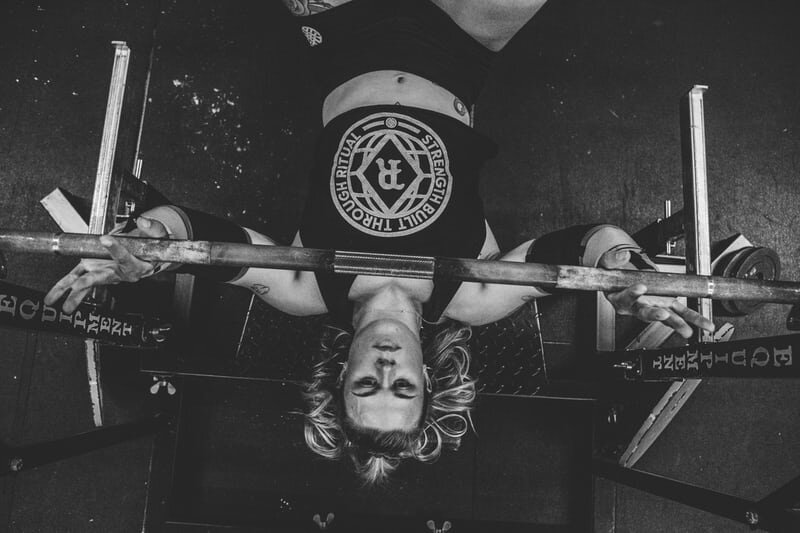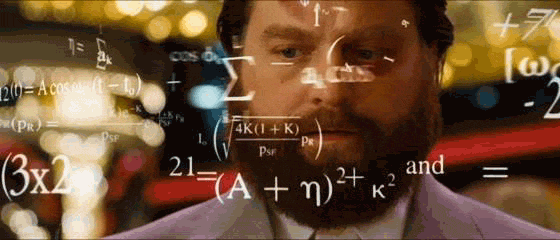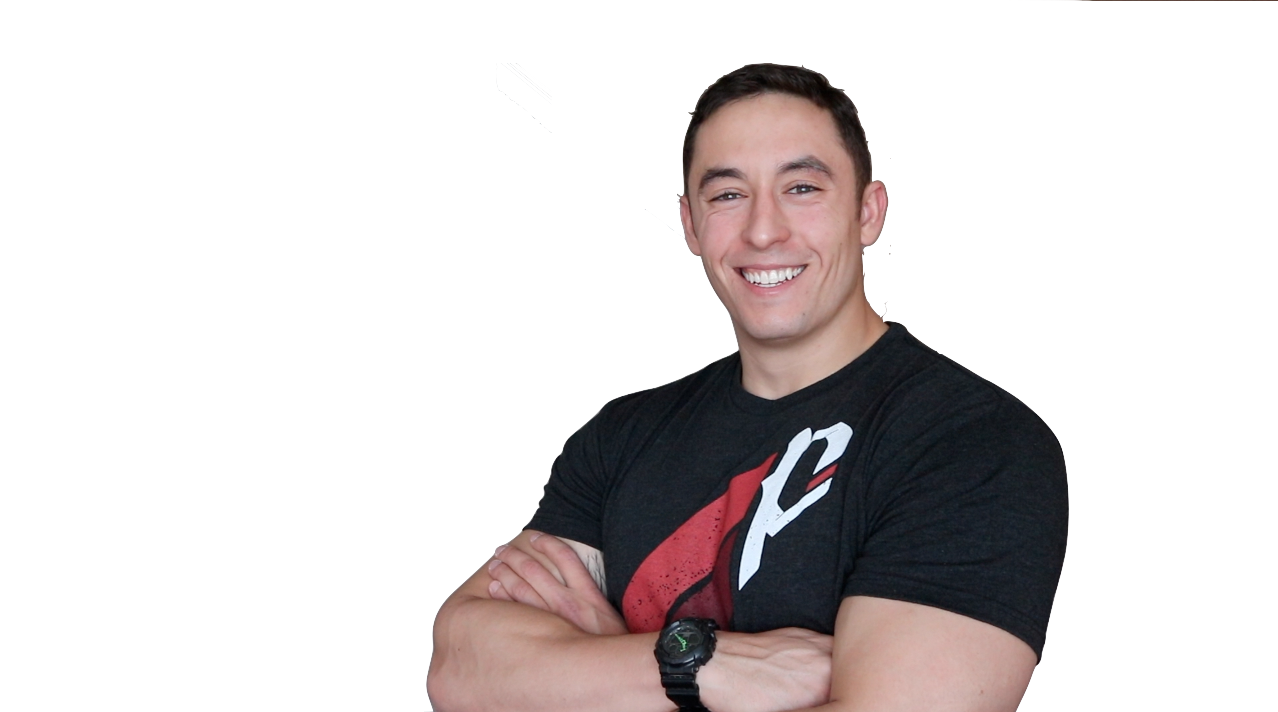
How to Tone Your Muscles
Tone is a made up word. But you can still sculpt a tight, lean, and sexy body. Here’s how.
Tone is a made-up word.
Yes, that’s correct. It’s a word the was created out of thin air to attract the attention of females that were trying to shape a leaner, tighter body.
There is not merit to the word, “tone”. But that doesn’t mean the idea behind it is worthless.
Creating a lean, tight, and sexy physique is something that can definitely be done, but it doesn’t happen through a “toning” process in our body.
Here is a four-step guideline on how to create that “toned” body you’ve always wanted.
STEP 1: BUILD YOUR STRENGTH
Strength is the foundation of it all. In order to build the muscle that you want to define and sculpt, you need to have a solid foundation of strength.
This is often the most neglected element of a training program, especially in women looking to build a tighter body. There is too much focus on feeling the burn and sweating, and not enough focus on building strength.
In order to become stronger, we need to send a strength signal to the body. We do this through our training program. The amount of weight we lift, reps and sets we complete, and rest taken in between sets tells our body to adapt and progress in different ways. Strength gains primarily come from our central nervous system (CNS). When we get stronger, our central nervous system commands more muscle fibers to do more work. The CNS is your amplifier to your muscles as an amplifier is to its speakers. The better the amplifier is, the better the speakers will operate. We absolutely need a strong signal from the CNS to command our muscles to lift more weight.
In order to build strength in the gym, you should focus on compound, bang for your buck movements. Compound movements are movements that involve more than one joint such as squats, lunges, deadlifts, presses, rows, and pull-ups.
While performing those movements, your intention should be on on moving as much weight as possible in lower rep ranges with good form. A traditional strength phase will include anywhere between 2-8 reps, 2-6 sets, and 90 second to 3 minute rest between sets.
As a general recommendation, perform 5 sets of 4-6 reps with 2 minutes rest in between sets, focus on maximum weight while maintaining good form.
Once you’ve established a good foundation of strength, it’s time to focus on building some muscle.
STEP 2: BUILD MUSCLE
I can’t stress enough how important this step is.
You simply cannot have a tight, defined, well-sculpted body if you do not have any muscle to show. Muscle is what we shape, build, and sculpt in order to allow our body to look a certain way. If you don’t have muscle, you won’t have anything to show off come beach time.
Muscle is what gives you the tight and defined look, so you absolutely need to prioritize it.
Building muscle has a little bit of a different focus than sheer strength does. Can you build muscle while focusing on strength? Absolutely. But once you’ve transitioned out of your strength phase, building lean muscle is top priority, so your intent in the gym needs to reflect that.
While lifting in the gym, your focus should be on the squeeze and contraction of your muscles. This is called mind-muscle connection. During each rep, your focus is on the squeeze of the muscle, feeling it work hard during each and every rep.
Mind-muscle connection can be a hard thing to establish, but describing it to my clients this way has seemed to help the most:
Don’t lift the weight to work your muscles, flex your muscles to move the weight.
Muscle building can happen in many different training protocols, but a general recommendation on how to structure your program for muscle building will give you a good start.
Aim for 8-12 reps, 3-4 sets, and 45-90 seconds rest in between sets.
After you’ve established strength, and increased your lean muscle, it’s time to shed some body fat and show off what you’ve worked so hard for.
STEP 3: LOSE BODY FAT
You need to have lower body fat percentages in order to create a lean and tight look. It is an absolute must.
Does that mean you have to be counting every calorie, every gram of carbs, and every milligram of sodium in order to get the look you’re striving for? Absolutely not, but it will take some commitment to change.
In order to lose body fat, we need have two things happening:
We need to be in a calorie deficit
We need to make sure our body is losing fat, and not muscle.
In order to lose weight, more calories need to be burned than taken in. We simply need to burn more calories than we eat and drink. That sounds super easy on the surface, but it’s much easier said than done.
If we take the above fact at face value, all we’d need to do is move more and eat less. The problem is, it’s not that simple. Eating less and moving more will help us lose weight, but it’s extremely important that we lose the right weight, which is body fat.
First you need to establish your deficit. Hopefully by now, you’ve figured out the amount of calories you need in order to maintain your current weight. If not, I recommend tracking your food intake as is, and see how that changes your average weight. Weigh yourself every morning, and use the average of those seven weigh-ins to make an assessment. If your average weight climbs after a few weeks, you’re likely in a calorie surplus. If your average weight stays, you’re likely at maintenance calories. If your average weight drops down, you’ve likely found your calorie deficit. If you haven’t found your deficit yet, you can use your maintenance and reduce from there. I recommend reducing 200-500 calories per day. So, if your maintenance is 1800 per day, you can drop down to 1500 per day and see how that affects your body.
I would take caution and remember that this is a tortoise’s race. Use the littlest adjustment to bring about the most amount of change.
Once you’ve established a calorie number that is less than you’ll be burning in the day, there are some other items you should address before putting things into action. These items have helped my clients lose body fat, maintain or even build muscle, and keep their metabolism roaring:
Keep protein high. Protein is a nutrient that our body needs to maintain and build muscle. Even if you are reducing calories, it’s important you keep your protein high in order to keep all the muscle you’ve worked so hard for. For relatively lean individuals, .8-1g of protein per pound of body weight works well. For those that are overweight or obese, .5-.8 grams of protein per pound of body weight is plenty. If you are obese, stay on that lower end.
Continue to lift weights. This is NOT the time to go balls to the wall with cardio to burn max calories. That will derail your long term progress. This is where you get to utilize all the time you spent building muscle and increasing your metabolism. Manipulate your weight lifting program to allow you to see the most amount of change with the least amount of work.
Use cardio as a last resort, short-term tool.
Now for step 4.
STEP 4. USE CARDIO AS A LAST-MINUTE BOOST
Cardio is one of the best things for fat loss only when it is used properly. And I mean it.
Cardio can either make you or break you.
Using cardio incorrectly can lead to a slower metabolism, and a much harder time losing body fat. But what does “incorrect” mean? In terms of fat loss, using cardio incorrectly means that you are using cardio as your primary driver for calorie burn. You are doing cardio chronically, every day, in the hopes to burn more and more calories.
Our bodies were beautifully designed to adapt to the environment we put them in. When we do tons and tons of cardio, we begin to adapt by burning fewer and fewer calories. When we do tons and tons of weight lifting and strength-building, we begin to adapt by burning more and more calories at rest. So it’s important we use the metabolism-boosting effects of weights to get the most results, and use cardio sparingly when our body is least adapted in order to burn the most amount of calories.
This is where we talk about doing cardio properly.
“Properly” in this context means that we are using cardio for a fat-loss boost as we approach the deadline of our goal. Remember, the less your body is used to cardio, the more effective the cardio will be for your fat loss. Use your weight training and nutrition to squeeze out the most amount of fat loss possible before introducing cardio.
When introducing cardio, I recommend implementing HIIT, or High Intensity Interval Training.
HIIT has been shown to be effective for calorie burn during and even after the session.
I recommend 12-20 minutes of HIIT, starting on the low end and working your way up. Alternate between intervals of high heart rate, and low heart rate. Pick one of your favorite cardio movements, and implement the following format.
30 seconds as hard as you can go
1 minute at a moderate pace
Repeat until total time (12-20 minutes) is reached
If your body is only used to weight lifting at this point, you should see benefit from your HIIT workouts.
Again, start low, and build up. Get the most you can out of the least amount of work, and only add more once you’ve maximized your results at your current cardio “dosage”.
THE TAKEAWAYS
This is the tortoise’s race. Slow and steady wins the race. If you want to create a lean, tight, “toned” look, focus on the following steps.
Step 1: Build your strength. Lift weights with the intention to get as strong as you can. 4-6 reps is a good range.
Step 2: Build muscle. Once you’ve increased strength, focus on the connection and pump of your muscles, squeezing hard each rep, with the intent to build muscle. 8-12 reps should allow you to build some muscle.
Step 3: Burn Fat: Manipulate your nutrition and continue lifting weights to burn body fat while keeping and maybe even building some muscle.
Step 3: As your approach your goal deadline, use HIIT cardio as needed. The body adapts to cardio within 2-3 weeks, so don’t abuse it. Use it as a last-minute boost.
ABOUT THE AUTHOR
Adam is a fitness professional, baseball fan, and cookie fanatic based in Fort Collins, Colorado. After hanging up the cleats, he found a strong interest in the human body and how it performs. Since then, Adam has been transforming lives through fitness in a fun and encouraging atmosphere. As an ACE CPT and Fitness Nutrition Specialist, he is constantly moved to help people improve in all walks of life.
WANT MORE FREE CONTENT?
Download any of our ebooks or guides for FREE in the “free” tab at the top of the page.
4 Must-Do Exercises to Build Muscle and Burn Body Fat
These four exercises must be a part of your exercise routine.
If you opened this article thinking there were magic exercises that would solve all of your muscle-building and fat-loss problems, I’m sorry to disappoint.
There is no such thing as an exercise that magically builds muscle and/or burns body fat. However, there are exercises that can make both of those process far easier.
Before we get in to specific movements, we need to briefly discuss what is at the root of muscle building and fat loss in order to fully understand and appreciate the contribution that these exercises can make.
THE ROOT OF MUSCLE-BUILDING
I’ll be honest, building muscle is far more complicated than losing fat. Luckily, there are some things we can keep in mind to keep from over-complicating the process.
Your body builds muscle when it is in the right environment and when it is given a proper signal. What is the “right environment?” Sound health, good sleep, proper nutrition/nourishment, and good hormone function all play a role in have the right environment. What is the “proper signal” that the body should be receiving? The proper signal is a signal that is telling your body that it must get stronger and build muscle. This signal is provided through weight training. There are many factors (sets, reps, rest, etc.) that go into using weights to send that signal. In general, lifting weights with the intent of getting stronger (heavier weights and longer rest periods) and setting personal bests can lead to strength and muscle gain.
THE ROOT OF FAT LOSS
You may have heard of calories in vs. calories out by now.
Calories are the units we use to measure the amount of energy in foods. When we consume more calories in the day than we burn, we gain weight. When we burn more calories in the day than we consume, we lose weight. Eating more than you burn is what is called a caloric surplus. Burning more than you eat is called a caloric deficit. Eating enough to maintain your current body weight is what we call caloric maintenance.
Although it is possible to lose body fat without being in a caloric deficit, being in a deficit may make fat loss far more likely.
Now that we understand the basic concept of building muscle and burning body fat, let’s talk about four exercises that can greatly contribute to your fat loss and muscle building goals.
EXERCISE #1: BARBELL SQUAT
The squat is one of the most revered exercises in fitness.
The squat is a compound movement, meaning the squat involves more than one joint. The ankles, knees, and hips are all involved during a squat. Since this is a compound movement, it involves multiple muscle groups including the glutes, quads, and a little bit of the hamstrings. Outside of the direct muscles that play a role in getting you from the bottom position to a standing position, other muscles are at work.
In order to keep the load (weight) from negatively impacting your spine, your entire core must be braced. The obliques, abs, and many other muscles help you maintain a tight and braced position as you move the weight.
Due to the involvement of so many major muscle groups, the squat likely burns a large amount of calories in comparison to say, a bicep curl. The squat also asks a lot of the heart as it needs to be able to pump blood and get oxygen to the major muscles of your lower body. Do a set of heavy barbell squats for 12-15 reps and you’ll see what I’m talking about.
In regards to building muscle, the squat carries lots and lots of potential. Remember that the movement involves more than one joint. This will allow you to apply a heavier load to the bar, potentially sending a louder signal (that’s the thing we talked about earlier) to build muscle.
Squatting - and squatting heavy should be a regular, consistent part of your training routine.
EXERCISE #2: Barbell Overhead Press
One of the things that shocked me most as a personal trainer was so many people’s inability to reach their hands over their head without pain, pinching, or complete breakdown in posture.
It may seem strange to you to think that some people can’t reach over their head well. But take a second to think about how often the average person needs to reach over their head. Almost never. We often need to reach up and out to grab a cup from the cabinet, but almost never straight up to the sky.
This causes many dysfunctions in posture, as well as a lack of shoulder mobility.
My years of personal training allowed me to fall in love with the overhead press as I saw it transform the way my clients felt and moved.
Aside from posture and a higher quality of life, the overhead press can involve many similar benefits that the squat does.
You see, the overhead press is a compound movement, too. The shoulder joint and elbow joint are both involved, causing the triceps and deltoids to take over a majority of the work. Not only is the upper body benefiting from this movement, but the core is as well. In order to properly press overhead without breakdown, the core, glutes, and legs, must be engaged.
Again, being that this movements involves multiple joints, it brings great potential for muscle building as a heavier load can be applied. More muscles being worked means more calories burned, too.
EXERCISE #3: BARBELL DEADLIFT
Thankfully, the deadlift has become so popular in recent years, as it should. The deadlift has so much to offer.
In our modern lifestyles, we spend a lot of time using the muscles on the front of our body. We reach forward, we slouch, we sit and stand from a chair, and we press some things from time to time. We don’t have enough actions in our lives that call us to use the backside of our body. Thankfully, the deadlift helps us make up for all that work on the frontside.
A barbell deadlift requires the entire back to be at work. It calls for the glutes and hamstrings to fully engage and fire, too. It is a wonderful exercise for the backside. Performing a proper deadlift on a regular basis can help you regain and/or maintain good posture, as well as send one of the loudest muscle building signals to the body.
EXERCISE #4: BARBELL BENCH PRESS
Ahh the bench press, loved by bros and hated by most females, this exercise did in fact make the list.
You may be thinking, “wait a minute, bench pressing works the front of our body. If we spend so much time working the front in everyday life, why do more of it in our workouts?” It’s because most people don’t do the bench press properly.
A proper bench press calls your entire body to be engaged, even your back. Keeping your glutes and shoulderblades engaged will reinforce good posture as you work you chest. As a result, your chest, triceps, and shoulders can get stronger without risking poor forward posture, otherwise known as upper crossed syndrome.
The bench press is also one of the better muscle building exercises. Remember, multiple joints means more load which meals a louder muscle-building a strength-building signal to your body. More muscle also means more calories.
I’d like to wrap it up with this:
For those of you reading, thinking that it seemed like these exercises were only for muscle-building, they’re not. Remember that there is no such thing as a fat-loss exercise, but rather exercises that have a bigger contribution to fat loss. If you don’t know, the amount of muscle on your body is one of the biggest contributing factors to the amount of calories your body burns in a day. The stronger you get, the more lean muscle that your body has, the more calories you automatically burn. Burning more calories automatically is a fat-loss goldmine. And I’m not talking about bodybuilder muscle here. I’m talking about the muscle that gives you that lean, defined, and toned look. Even if your goal is fat loss, focus on getting stronger, as you get stronger, the fat will come off easier.
ABOUT THE AUTHOR
Adam is a fitness professional, baseball fan, and cookie fanatic based in Fort Collins, Colorado. After hanging up the cleats, he found a strong interest in the human body and how it performs. Since then, Adam has been transforming lives through fitness in a fun and encouraging atmosphere. As an ACE CPT and Fitness Nutrition Specialist, he is constantly moved to help people improve in all walks of life.
WANT MORE FREE CONTENT?
Download any of our ebooks or guides for FREE in the “free” tab at the top of the page.
Low Carb vs. Low Fat: Which Is Better For Fat Loss?
If several diets are built from either the low-fat or low-carb camp, it’s worth figuring out whether or not one really is better for fat loss.
For as long as we can remember, diet trends have fought with each other for our business, and things are not slowing down. It seems that every single week there is a new trend or a new diet that is promising all the benefits of the previous diet and more.
Although different trends are arising left and right, two diets have stood the test of time and continue recurring in different forms. Those two diets are low-carb and low-fat. Whether it’s Atkins, Keto, Mediterranean, or Paleo, some form of low-carb or low-fat arises promising to help you lose fat.
If several diets are built from one of these two concepts, it’s worth figuring out why and whether or not these protocols actually work for fat loss.
Let’s dive in.
HOW DOES FAT LOSS WORK?
Understanding the basics of fat loss will allow you to make concrete decisions on what is best for your fat loss journey. Fat loss is made out to be a very complicated process, but it really isn’t. In fact, it’s quite simple.
Have you ever heard someone say “calories in, calories out”? If so, you understand the main principle behind fat loss. Congratulations. Our bodies need fuel to operate, and calories are our form of fuel. When we burn more fuel (calories) in the day than we consume, we lose weight. When we burn fewer fuel in the day than we consume, we gain weight. Keep in mind that losing weight can be different than losing fat. You want to make sure you’re performing a weight training routine while losing fat in order to keep your muscle and have a majority of the weight you lose coming from body fat. Anyway, in order to lose weight (most of which is body fat) you need to be using more energy in the day than you consume. Question is, what can you do to burn more calories in the day than you consume?
HOW TO BE IN A CALORIC DEFICIT
A caloric deficit is a fancy yet way of saying that you’re burning more than you consume in a day. There are a couple of ways you can make this happen. You can either eat less food, perform more activity, or do a combination of both. Note that I am not a supporter of eating less and moving more over and over to lose fat. More is not always better. Regardless, either eating fewer calories, moving more, or a combination of both is required to be in a caloric deficit.
Since this article is about low-carb and low-fat protocols for fat loss, we will stay in our lane and focus on eating less to get into a caloric deficit.
Carbohydrates and fats are two of three major macronutrients. The other is protein. Macronutrients contain the calories that we burn and consume in the day. Carbohydrates and protein contain 4 kcal (calories) per gram, and fat contains 9 kcal per gram. If you passed basic math in elementary school, you’ve hopefully come to the conclusion that if you reduce carbohydrates, you reduce calories. If you reduce fat, you reduce calories.
I know. Super complicated stuff.
But this conclusion begs the question that we’ve been getting to: Which one is better for fat loss?
Before we get into that, though, I want to note a couple more things. Remember that calories in and calories out is what determines fat loss. Also remember that both carbohydrates and fats contain calories. In regards to fat loss, there is nothing innately wrong with carbohydrates, and there is nothing innately wrong with fats. If you reduce calories from carbohydrates to put yourself in a caloric deficit, you will lose fat. If you reduce calories from fat to put yourself in a caloric deficit, you will lose fat. In addition, it is never good to completely cut out a food group in order to lose body fat. As you read, don’t think about going low-carb or low-fat. Think more in terms of LOWER carb and LOWER fat. So the real question is, which one is best not just to lose fat, but best to help you stay consistent in a caloric deficit as well.
STAYING IN A CONSISTENT DEFICIT WITHOUT STRUGGLE
Calories in and calories out is simple, but the way carbohydrates and fats affect our body isn’t quite as simple. Each nutrient affects our digestion, energy, blood sugar, and satiety in a different way. Many of these factors make it easier or harder to stay in a caloric deficit.
This is why, when it comes down to the nitty gritty, I recommend that people go lower carb.
Although carbohydrates contain fewer calories per gram, going lower carb is often a better option for fat loss when compared to lower fat.
One of the big things that hurts us while trying to stay in a consistent caloric deficit are cravings. Cravings are often hard to beat, especially when we are under physical and emotional stress. When we consume carbohydrates, our blood sugar rises, potentially causing cravings. Consuming a diet that is lower in carbohydrates can keep these cravings at bay. The fewer cravings you have, the lower the chance that you consume too much food, taking you into a caloric surplus instead of a caloric deficit. Note that this does not mean carbohydrates should be avoided. Your diet should still consist of healthy, easily digestible carbohydrates to fuel your workout and to optimize your recovery post workout. After all, you can’t just focus on food to lose fat. You need to be weight training while focusing on your strength to promote a healthy metabolism. Carbohydrates play a major role in that.
Not only will a diet lower in carbohydrates keep cravings at bay, but it will also allow room for plenty of healthy fats.
Healthy fats are very satiating. This means that they keep us feeling full much more than carbohydrates do. This is a reason I never recommend cutting down fat to get into a caloric deficit. Healthy fats are also essential for optimal hormone function. A lot of individuals that hire me to help them reach a goal have cut down on fats too hard, all while working out too much and getting far too little sleep. This is a recipe for a hormonal disaster. And even if your deficit has worked before, it may not work well when your hormones are all out of wack. Another reason to keep fats higher while you’re in a deficit.
I must add, though, that the above information isn’t that powerful unless you are weight lifting, and getting plenty of protein in each day. The main force behind our metabolism is our lean muscle tissue. If you are working and fueling to promote more lean muscle tissue, fat loss is far easier. Not only does protein facilitate lean muscle tissue improvement, but it is also important when it comes to satiety and its thermogenic effect. Like fat, protein keeps us satiated and far away from cravings. Like fiber, it also requires more calories burned in order to digest it. Those calories, although not many, can make a difference. You should aim for .8-1g of protein per pound of body weight each day while performing a weight training routine.
THE TAKEAWAY
Staying in a caloric deficit is the key to fat loss. Carbohydrates and fats have calories, so reducing one, the other, or a little bit of both will contribute to a reduction in calories. Remember, it is not about completely cutting carbs or fats out, bur rather cutting enough calories out of your diet to put yourself into a caloric deficit. I recommend slowly reducing your carbohydrate intake while keeping fats relatively high in order to stay full and promote healthy hormone function. Keep some carbs in your diet, though. You’ll need them for your workouts and recovery.
ABOUT THE AUTHOR
Adam is a fitness professional, baseball fan, and cookie fanatic based in Fort Collins, Colorado. After hanging up the cleats, he found a strong interest in the human body and how it performs. Since then, Adam has been transforming lives through fitness in a fun and encouraging atmosphere. As an ACE CPT and Fitness Nutrition Specialist, he is constantly moved to help people improve in all walks of life. If you’re interested in hiring Adam as your coach, fill out an application here.













